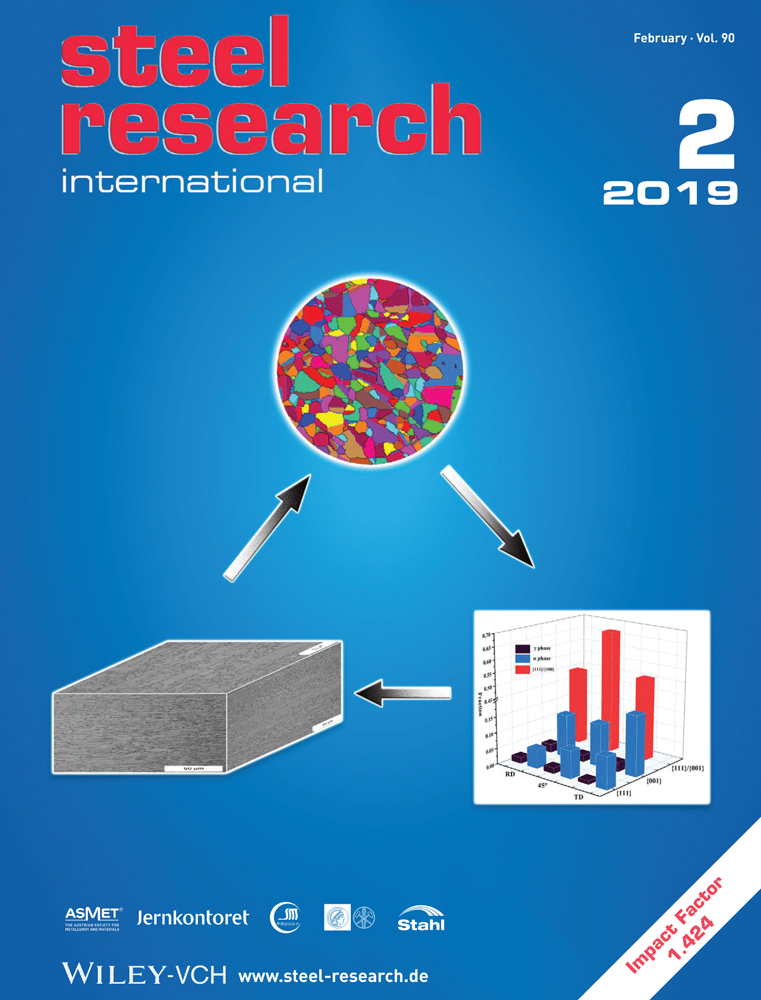Analysis of {100} Texture Formation in Vacuum Annealed Electrical Steel Based on Elastic Anisotropy and Surface Energy Anisotropy
Abstract
In the present work, columnar grains with strong {100}<0vw> texture in the surface layer are obtained by controlling cold rolling reduction and vacuum annealing with α → γ → α transformation in a Fe–3%Si steel sheet containing Mn and C. The formation of the {100}<0vw> texture during vacuum annealing is related to cold rolling reduction. The {100}<0uv> seeds are retained during a low cold rolling reduction and recrystallization process. The annealed {100}<001> and {100}<012> originate mainly from the nucleation of recrystallization in deformed microstructures. The {100}<011> texture, that is, formed during vacuum annealing originates from the deformed {100}<011>. The development of sharp {100} texture is caused by α → γ → α transformation during vacuum annealing. In the process of γ to α transformation, the values of elastic strain energy for α grains with different orientations on the surface are estimated. By combining the surface energies of various crystallographic planes, it is reasonable to conclude that the elastic strain energy anisotropy plays a significant role in the formation of a sharp {100}<0vw> texture during γ → α transformation. The {100}<0vw> grains prefer to grow in the surface layer columnar grains by minimizing elastic strain energy during γ → α transformation.
Conflict of Interest
The authors declare no conflict of interest.




